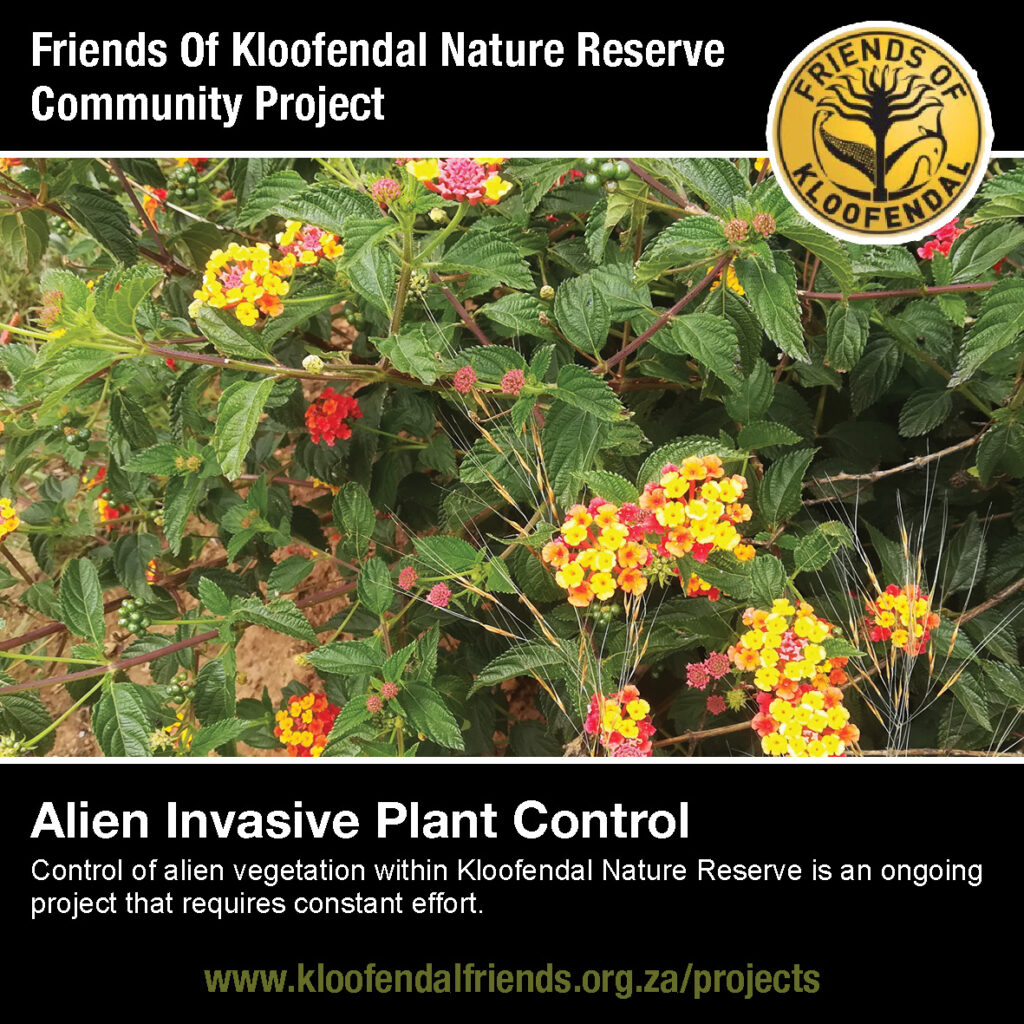Alien Invasive Plant Control

Control of alien vegetation within Kloofendal Nature Reserve is an ongoing project that requires constant effort. FroK is working on alien plant control on an ongoing basis.
The FroK Weeding team meets on Monday and Wednesday, at times also on Fridays early mornings, working for 2 to 3 hours, starting time varies, 6 or 6h30 am during summer, 7am during winter.
Alien Invasive Plant Control involves participants learning to identify the declared (illegal) and other invasive problematic plants, how to distinguish them from non-invasive, similar looking indigenous plants, and how to control them. This involves physically removing the plants with the aid of tree poppers, picks and good weeding forks. Bigger plants need to be cut, followed by application of the appropriate herbicide.
Each plant removed with its rootstock, or cut and poisoned, is recorded with a free App., GPS Essentials. The data are subsequently processed to show accurately where and how much work has been done on the different plant species.
Why remove alien invasive plants?
Declared Alien Invasive Plants in South Africa are required to be removed by South African law.
They replace our native plants, using various techniques:
- Antibiosis – making soil and water around them toxic to our native plants e.g. Black and Silver Wattle.
- Many Alien Invasive Plants are toxic to our native animals, so they do not get eaten. If animals do eat them, they can die (Cestrum species).
- Many are harmful in other ways such as toxic fumes and sap (Cestrum laevigatum), allergenic hairs such as Bugweed.
- They utilise our native plants when young, the native plants protecting them from the elements such as fire, wind, frost, and then out compete them.Their roots can be so intertwined with the surrounding native plants, it looks like strangulation, competing in water and nutrients absorption from the ground (Lantana camara).
- They often get far bigger than the indigenous plants, so their water usage is much higher than the indigenous plants.
- Their rapid growth changes the natural environment, changing the natural veld habitat, causing the native smaller species to die, such as sun loving grasses being replaced by shady AIP forests.
- They have a prolific underground suckering system (vegetative formation of a new stem and root system from an adventitious bud of a stem or root) such as Cestrum laevigatum, Black and Silver Wattles.
- They have prolific seed production (Black and Silver Wattles, Back Wood, Cotoneaster franchetti, Jerusalem Cherry).
- Long lived seeds in the soil, which can germinate after many years and are not eaten by insects.
- The increase of biomass (many woody trees) causes very hot fires, which cause death of underground ecosystems, ground becomes dry, no roots to hold the soil, so erosion sets in, adversely affecting water quality lower down.
- They reduce stream flow, reduction in ground water which leads to reduced dilution of pollutants, suspended solids and a greater concentration of nutrients in the water, killing life in the water.
- An AIP infestation such as Lombardy Poplar, Syringa, Black and Silver Wattle has a severe effect on amount of water in our streams and can totally dry out the stream.
Do you want to help your community?
Please contact Karin from FroK at cell 079-693-5608 or email kloofendalfriends@gmail.com if you would like to assist in this rewarding, early morning exercise!